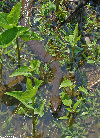Cottonmouth and Similar Looking Harmless Species
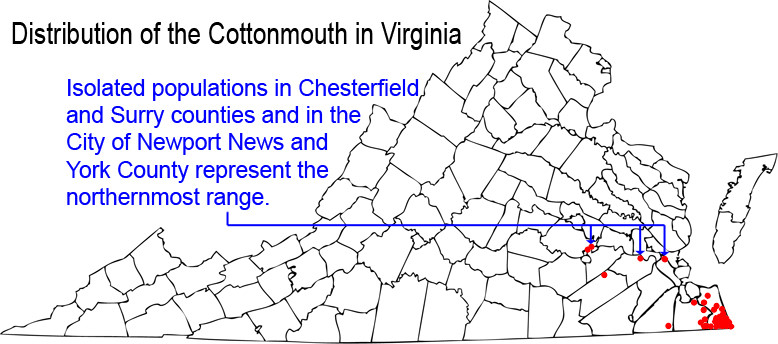
The most notable thing about the Northern Cottonmouth in Virginia is its very limited
distribution within the state. In recorded Virginia history, the venomous cottonmouth has only
been found in the following counties/cites: Brunswick County,
Chesapeake City,
Chesterfield County,
Dinwiddie County,
Greensville County,
Newport News City,
Prince George County,
Southampton County,
Suffolk City,
Surry County,
Sussex County,
Virginia Beach City,
York County
Young Northern Cottonmouths with yellowish tail tips.
* Click on a thumbnail to see a larger version
Northern Cottonmouths are born alive with a bright yellowish to yellowish green tail tip. The yellow tail tip is used as a lure for frogs, lizards and other prey items. This brightly colored tail tip fades to black as the snake ages. The color of cottonmouths is a yellowish olive to black with about 13 black crossbands that are wide on the sides and narrow as they approach the backbone. Some of the crossbands may be broken, not meeting at the backbone. The outer edges of the bands are usually black. Crossbands get darker as they approach the tail. Older adults may be a uniformed dark color, usually black, without a discernable pattern.
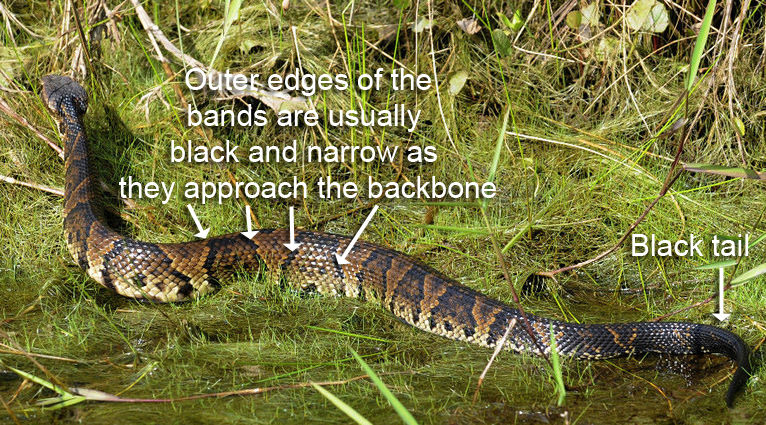
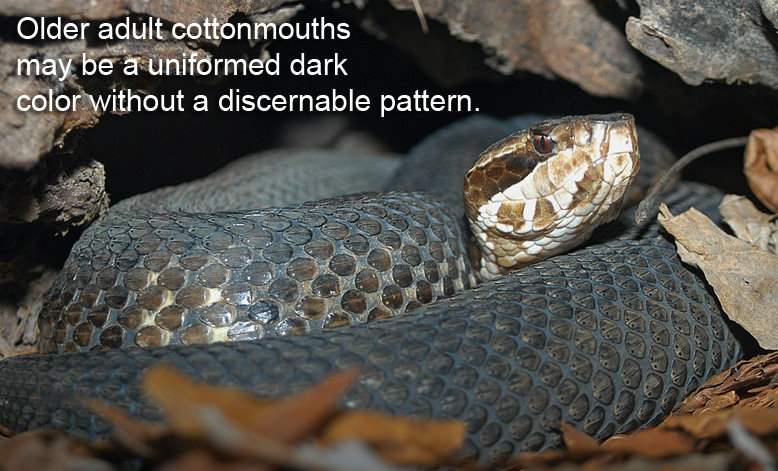
The name "cottonmouth" refers to the manner in which the cottonmouth notifies other animals including humans of its presence. Opening of the mouth and flashing the inner white lining is not an aggressive action, it simply makes the cottonmouth more visible. Despite common folklore, cottonmouths do not chase after people.
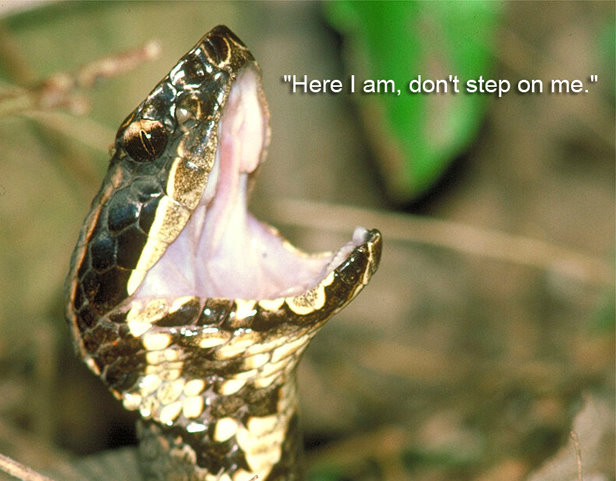
The Northern Cottonmouth is a pit-viper, as are all three of Virginia's venomous
snake species (Eastern Copperhead, Northern Cottonmouth and Timber Rattlesnake). The "pit"
in pit-viper refers to the heating sensing pit located between the eye and the 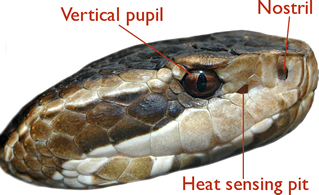 nostrils on the snake's head. In addition to the heat sensing pit all
three venomous snakes in Virginia have vertical pupils. All harmless snakes in Virginia have
round pupils and lack the heat sensing pits.
nostrils on the snake's head. In addition to the heat sensing pit all
three venomous snakes in Virginia have vertical pupils. All harmless snakes in Virginia have
round pupils and lack the heat sensing pits. 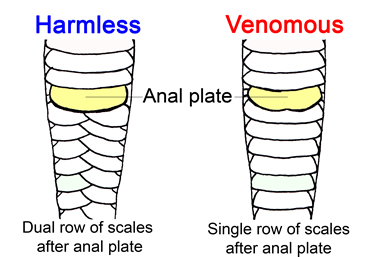 Another characteristic of all
Virginia's venomous snakes is the single row of scales on the underside of the tail after the
anal plate (vent).
Another characteristic of all
Virginia's venomous snakes is the single row of scales on the underside of the tail after the
anal plate (vent).
While close inspection of a snakes face and/or its bum is a definitive way to distinguish a venomous snake from a harmless species, it requires one to get dangerously close to a potently dangerous animal. It is far better to learn the pattern and coloration of a few snakes so that specimens may be identified from a safe distance.
Cottonmouths primarily feed on fish and frogs, however they also play a pivotal role in controlling rodent populations. Without cottonmouths and other rodent eating snakes there would be a drastic increase in crop/food damage and rodent spread diseases. While cottonmouths are venomous they are placid snakes that only bite if stepped on or otherwise threatened. If you see a cottonmouth, leave it alone and rest assured it will do its best to avoid you.
Northern Cottonmouth vs. Northern Watersnake
Northern Watersnakes are one of our most abundant snakes and can be found near any body of water that supports fish and/or frogs. Unfortunately, harmless northern water snakes are frequently misidentified as "cottonmouths". This occurs at an alarming rate even well outside the range of the cottonmouth.
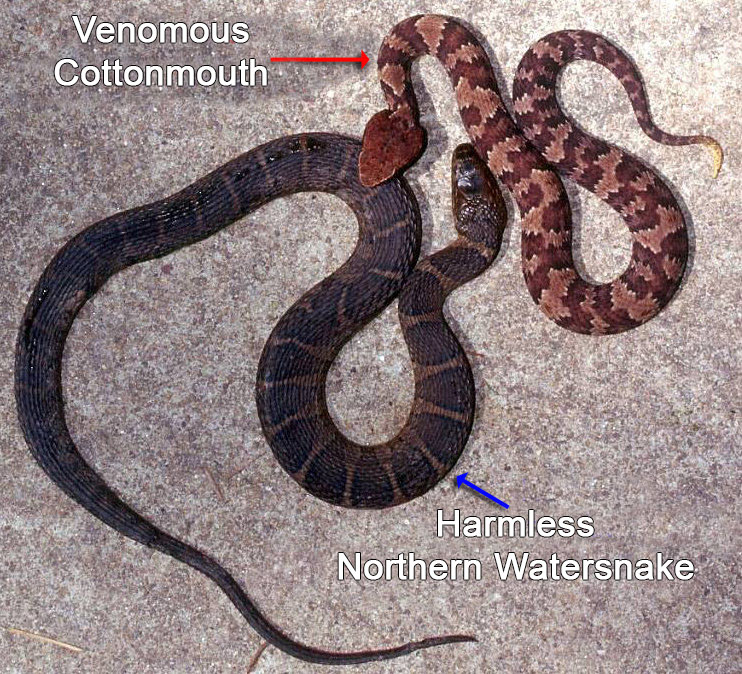
Northern Watersnakes have a body color of brown to gray with varying amounts of white, red and yellow. Their pattern consists of closely positioned crossbands. The crossbands break up about halfway down the length of the snake and form a series of rectangular, alternating blotches near the backbone and on the sides. Some Northern Watersnakes can be a uniformed brown to grayish color without a discernible pattern.
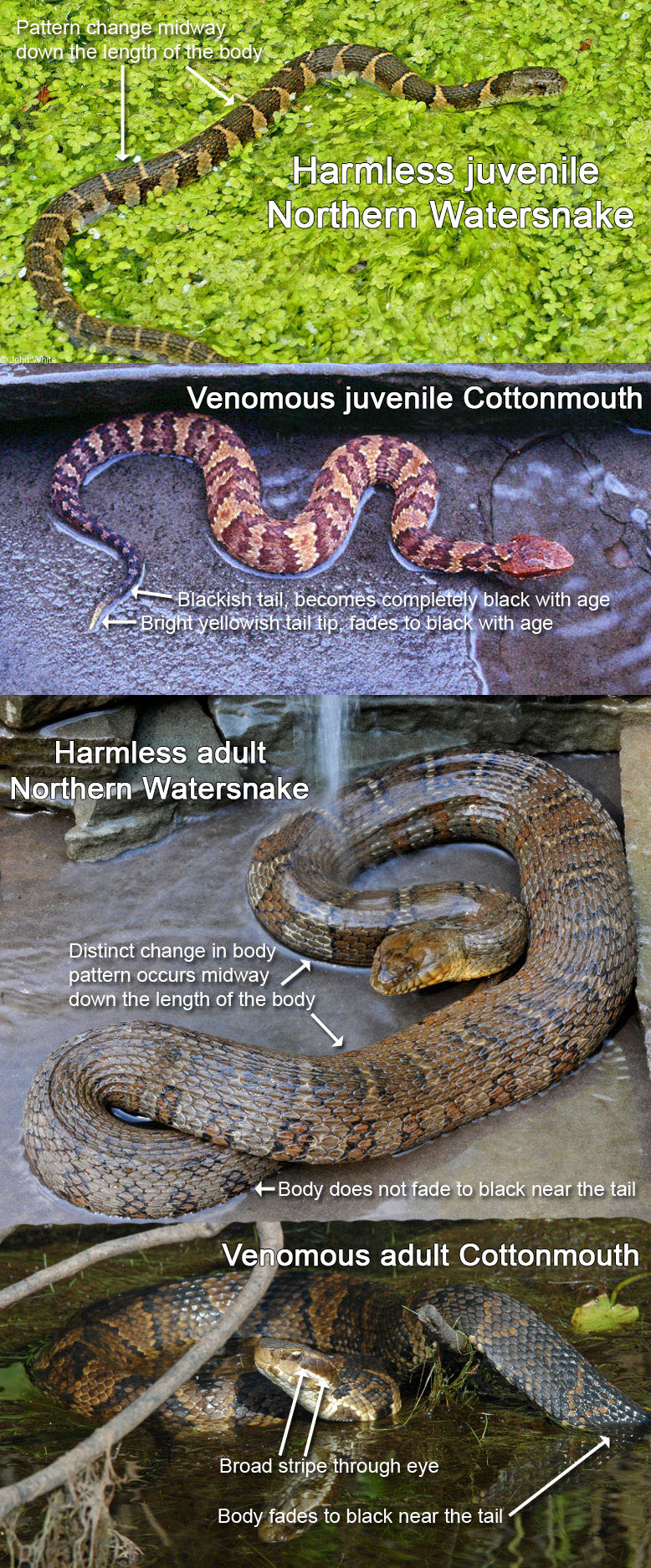
A couple reduced patterned Northern Watersnakes. Click to enlarge
Venomous Northern Cottonmouth |
Harmless Northern Watersnake |
 |
 |
|
Very Limited Distribution and Population |
Very Abundant State Wide Distribution and Population |
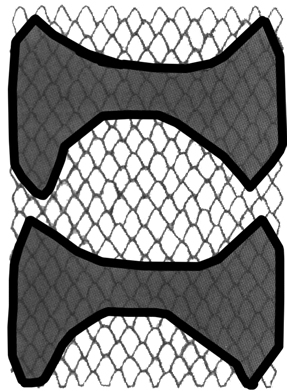 |
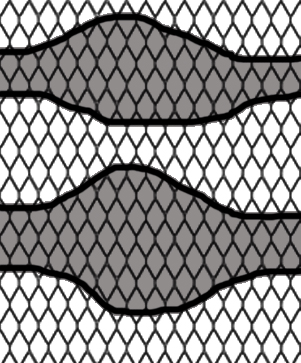 |
| Hour-glass pattern outlined in black. | Pattern is narrow on the sides and wide near the midline. Reduced patterned and patternless Northern Watersnakes are typically found in the Potomac Drainage from Arlington south to Quantico |
Northern Cottonmouth vs. Brown Watersnake
Juvenile Brown watersnakes are patterned the same as adults. This snake has a relatively long head which is wider than the neck. Active during the day and often seen basking on overhead vegetation over the water. Brown Watersnakes primarily feed on catfish.
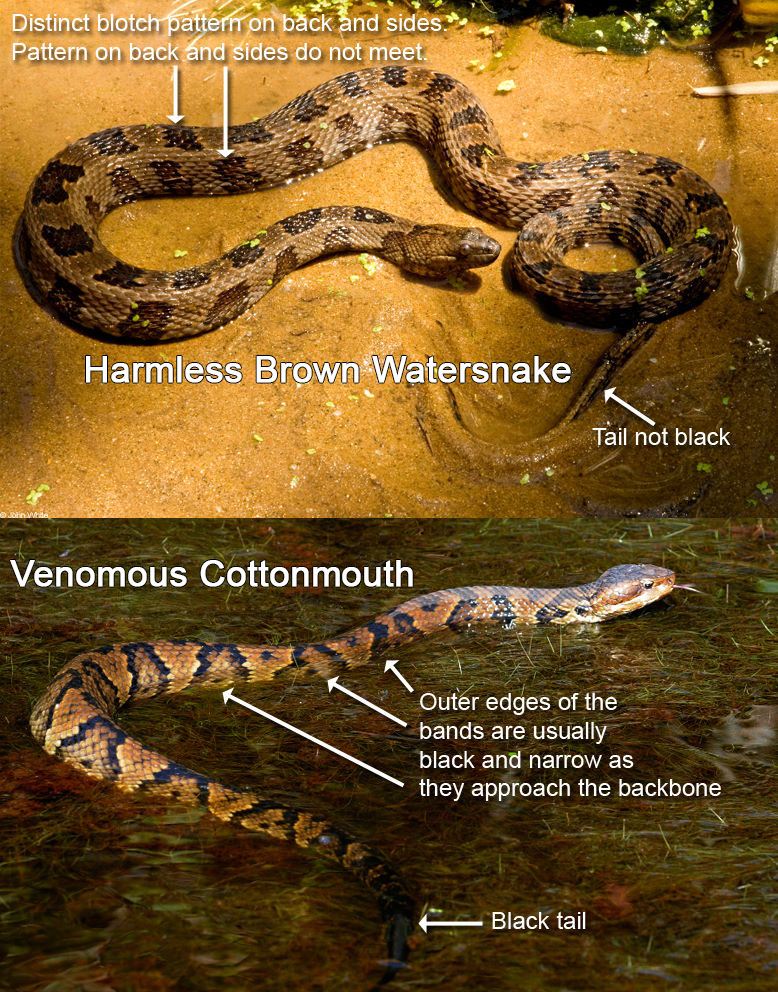
Venomous Northern Cottonmouth |
Harmless Brown Watersnake |
 |
 |
| Very Limited Distribution. | Limited Distribution |
 |
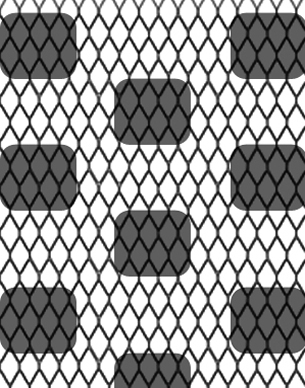 |
| Hour-glass pattern outlined in black. | Rectangular blotch pattern on the side and back Blotches do not touch. |
Northern Cottonmouth vs. Plain-bellied Watersnake
Juvenile Plain-bellied Watersnakes are boldly patterned with a pattern similar to a juvenile Northern Watersnake, but usually with a pinkish base color. Adults are reddish brown to chocolate brown. Subadults or young adults may retain traces of a juvenile pattern.
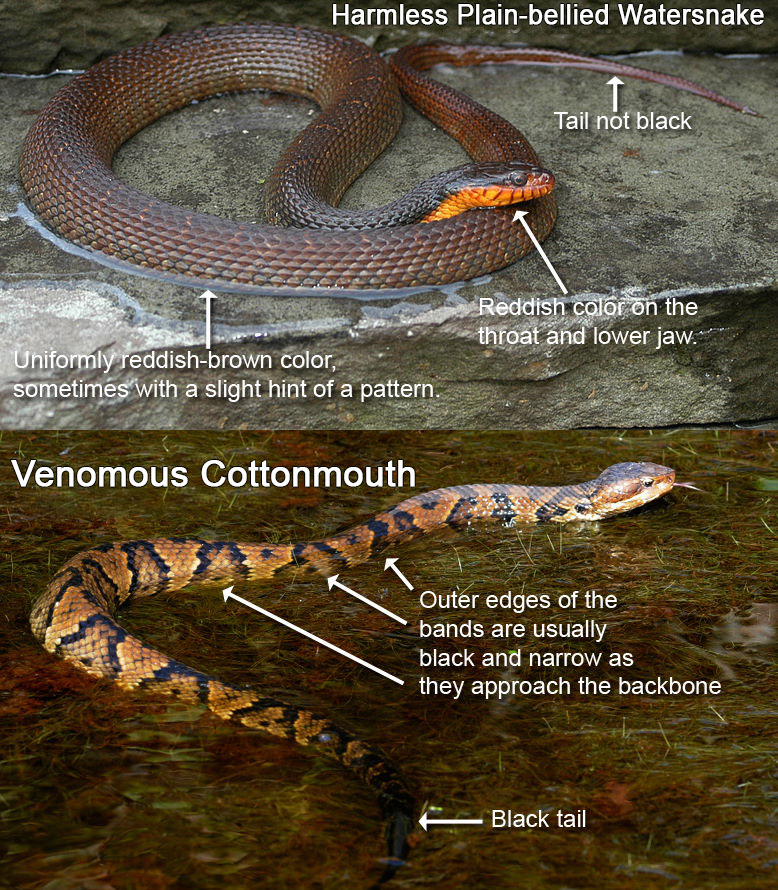
Venomous Northern Cottonmouth |
Harmless Plain-bellied Watersnake |
 |
 |
| Very Limited Distribution. | Limited Distribution |
 |
 |
| Hour-glass pattern outlined in black | Reddish brown solid color |



